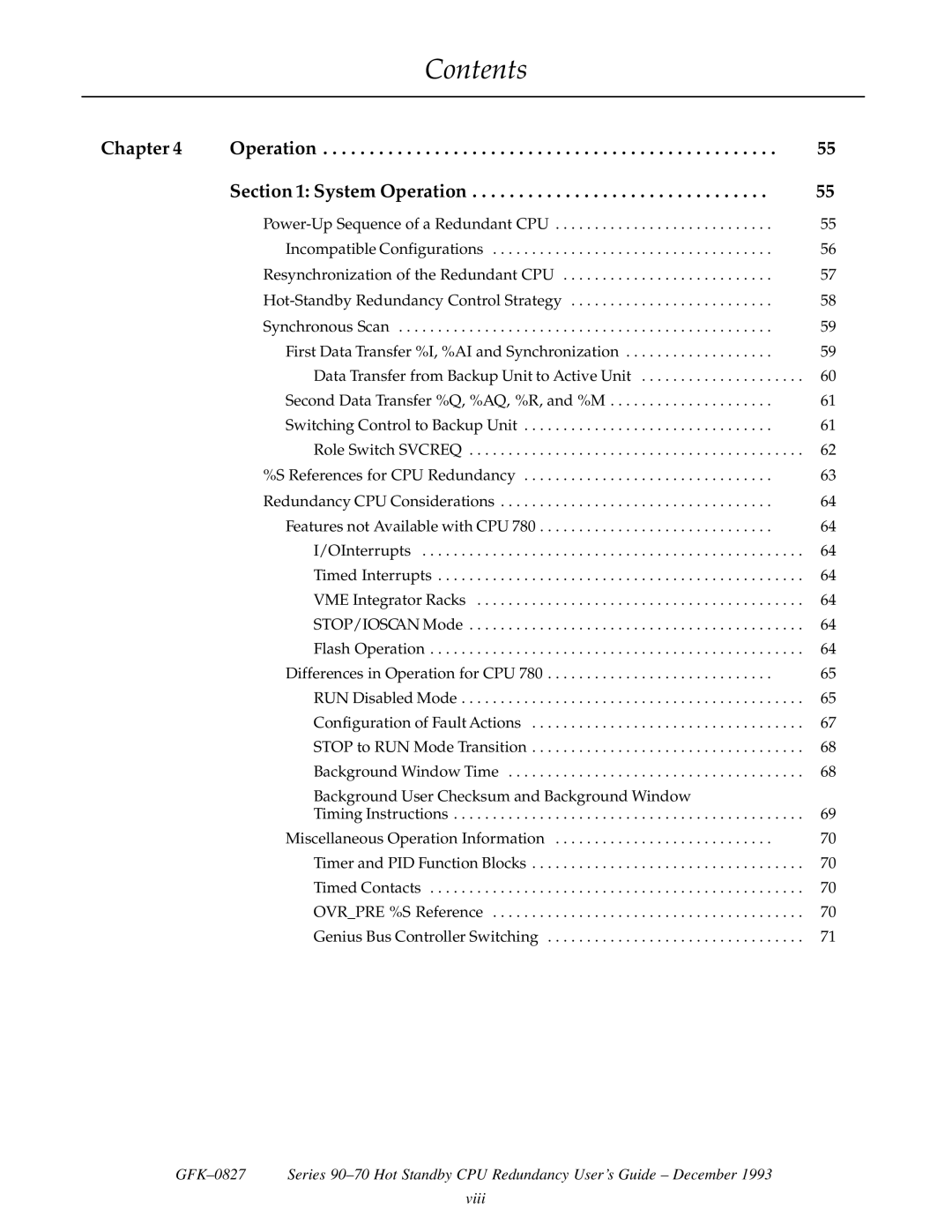Contents
Chapter 4 | Operation | 55 |
| Section 1: System Operation | 55 |
| 55 | |
| Incompatible Configurations | 56 |
| Resynchronization of the Redundant CPU | 57 |
| 58 | |
| Synchronous Scan | 59 |
| First Data Transfer %I, %AI and Synchronization | 59 |
| Data Transfer from Backup Unit to Active Unit | 60 |
| Second Data Transfer %Q, %AQ, %R, and %M | 61 |
| Switching Control to Backup Unit | 61 |
| Role Switch SVCREQ | 62 |
| %S References for CPU Redundancy | 63 |
| Redundancy CPU Considerations | 64 |
| Features not Available with CPU 780 | 64 |
| I/OInterrupts | 64 |
| Timed Interrupts | 64 |
| VME Integrator Racks | 64 |
| STOP/IOSCAN Mode | 64 |
| Flash Operation | 64 |
| Differences in Operation for CPU 780 | 65 |
| RUN Disabled Mode | 65 |
| Configuration of Fault Actions | 67 |
| STOP to RUN Mode Transition | 68 |
| Background Window Time | 68 |
| Background User Checksum and Background Window |
|
| Timing Instructions | 69 |
| Miscellaneous Operation Information | 70 |
| Timer and PID Function Blocks | 70 |
| Timed Contacts | 70 |
| OVR_PRE %S Reference | 70 |
| Genius Bus Controller Switching | 71 |
GFK±0827 | Series 90±70 Hot Standby CPU Redundancy User's Guide ± December 1993 |
viii
